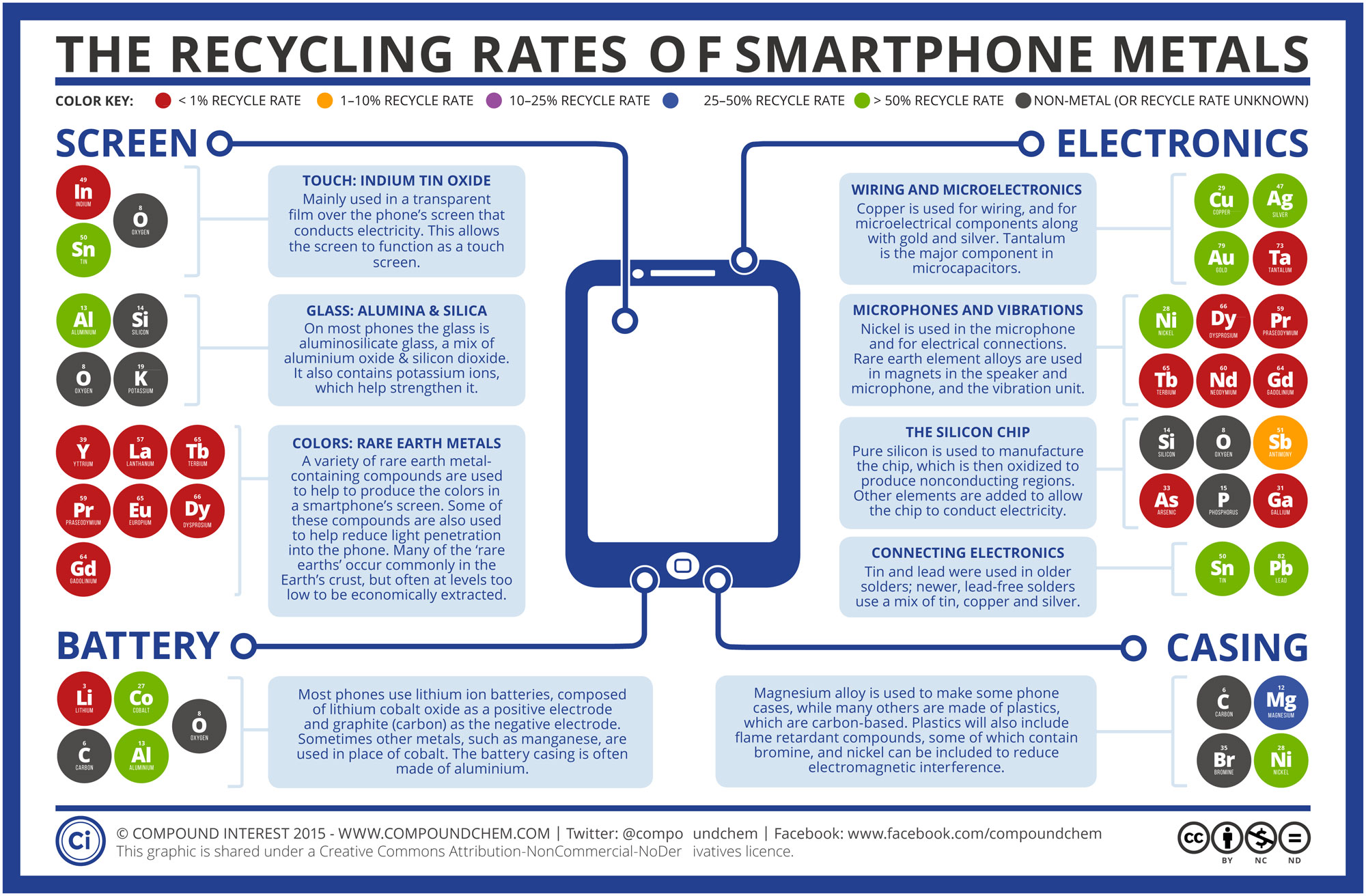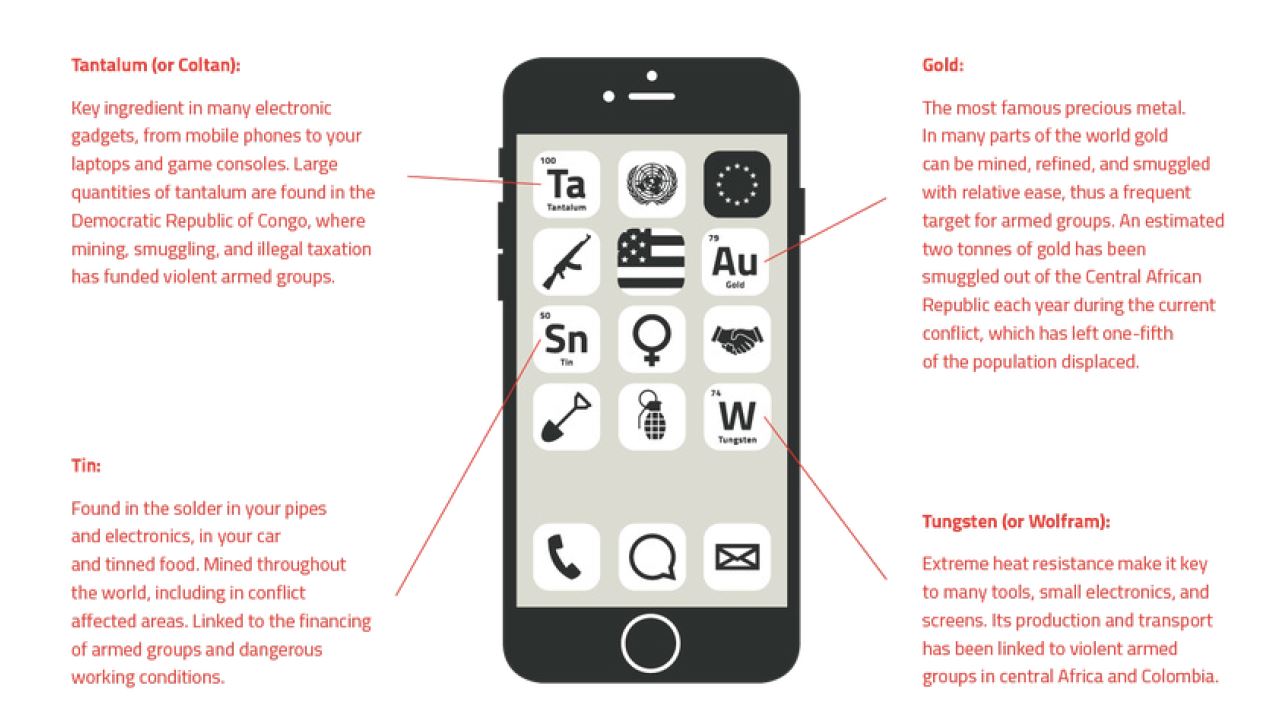Virtual realms with tangible impacts

In a world of hyperconnection, computers, tablets and phones have become essential work tools and follow us everywhere in everyday life. They have transformed our relationship to knowledge, our ways of collaborating, and living in society. The digital revolution has given birth to us, homo connectus. Well installed behind our screens, endowed with super powers of ubiquity and immediacy, though we sometimes still have difficulties to realize the impacts, of our modes of communication, which are plural. Could it be that despite our digital immersion, we are disconnected from the reality that our favorite devices are hiding? To find out, let's keep track of them!
Did you say metals?
In the beginning, there are the raw materials. The impact of our technologies begins as soon as they are extracted and can translate into the illegal diversion of certain resources. This is the case, for example, in the Republic of Congo where crimes against humanity are perpetuated thanks to the sale of certain metals commonly referred to as "conflict minerals", or more tragically "blood minerals". These include tin, tantalum, gold and tungsten, materials that are widely used in the manufacture of our communication devices.
Since the 1990s and the global technology boom, some mines have been cornered by rebel groups. The money from the mineral’s sales is used to buy weapons and fuel regional conflicts in complete ignorance of human rights. In order to remedy this situation, several legal measures have been taken worldwide. In the United States, the 2010 Dodd-Frank Act requires companies that are registered on the US stock exchange to report the metals’ sources when used in their products. If they are shipped from the Republic of Congo or a neighboring country, they are subject to an external audit. In Europe, laws require controls upstream the supply chain to ensure the traceability of metals. However, the scope of these measures is still too limited when we know that there is no such regulation in Asia, a major producer of high-tech objects.
As the issue of raw materials extraction is quite material for manufacturers, Fairphone decided to set up a traceable cobalt supply chain, from a selection of artisanal and small-scale mining sites in Congo. Although cobalt is not classified as a conflict mineral, mining conditions are often associated with serious human rights violations, including child labor. The brand will work directly with these sites to improve working conditions.
Another problem, that of rare metals, as raises the well-publicized work of Guillaume Pitron "La guerre des métaux rares" published at the beginning of the year and subject to many debates. He warns against the depletion of metal reserves contained in smartphones such as gold or silver due to their strong exploitation. Moreover, these metals are often extracted in highly polluting mines in developing countries, leading to the contamination of the soil and water of the territories was well as to the development of many diseases in the regions concerned…. to be continued.

Energy consuming digital tools
The environmental impact of the necessary energy production for the proper functioning of the latter is clearly recognized. In 2015, the IT sector consumed 10% of the world's electricity production. A crucial point remains: data hosting. Indeed, the virtuality of the internet pales into insignificance facing the 3209 data centers scattered around the world. The computer servers they contain have to stay in a tempered room at around 24 degrees all year round to avoid overheating. Their energy consumption is then dizzying ... By comparison, Facebook's data centers consume as much energy as a city of nearly 280,000 inhabitants. In order to reduce their energy bills and take action for the environment, some multinationals have decided to set up their data centers in cold countries, such as the Scandinavian countries, or to use green energies by moving towards the use of solar data centers. In the Grand Duchy, green data centers have become Luxconnect’s philosophy, maximizing the potential of circular economy and thus considerably reducing its emissions.
The thorny issue of use
Environmental impacts obvisouly, but also psychological impacts…Digital communication boosts our reactivity and our productivity, it is undeniable, it encourages us to address topics in an agile and collaborative way. The merits of the digital incursion in our professional life have been widely vaunted and are no longer to be demonstrated. The positive impacts of this revolution are there but an unbridled use of the allcommunication leads us to the limits of the model. What kind of dosage, which balance can we work toward? On average, employees exchange 112 emails a day! Being connected at all times can sometimes be counterproductive in the workplace and many companies are looking at alternative communication systems. With company smartphones or laptops, the boundary between private and working life is blurred. Recent studies have indeed identified dependency ratios and strong psychosocial dysfunctions among intensive users. Faced with the increase in chronic stress in the workplace, the question of the right to disconnect is now invoked in HR departments discussions.
From our office to their tragic destinies
Let's pursue the trace or should we say the fingerprint of our digital devices ... what happens to them at the end of use? Today, the number of mobile phone users in the world surpasses five billion and bad news, recycling of these products is very difficult. Nowadays, only less than 1% of the metals used for our high-tech devices are recycled. A mobile phone indeed has more than 60 different metals, and only about twenty of these can be recycled; for several reasons: their alloy use, the loss of a part of the metal during the melt, the impossible sorting due to a too important quantity of metals. In Luxembourg, there is an initiative to recycle computers and phones. It is led by Digital-Inclusion, an association that restores old devices to distribute to people in need. The planned obsolescence of our devices compels us to throw them away increasingly early, as repairing them is sometimes more expensive than the price of a new device. This phenomenon, already noticed in the United States in the 1930s, consists of purposely reducing the product’s lifetime in order to stimulate demand. This question has been in the news since the French association Halte à l’Obsolescence Programmée (HOP) filed a complaint against Apple at the end of last year. The multinational is accused of voluntarily slowing down its previous IPhone models to sell more recent ones. Apple has admitted resorting to this approach, recognizing also that its customers change on average smartphones every 3 years. According to Gartner, a high-tech specialist , users in Western Europe renew their mobile phones every 2.4 years (every 3, 1 years for high-end devices). The figures are a bit better for other media with 5 years for a desktop computer, 4 years for a laptop and 3 years for a tablet. According to Defra (UK Department for Environment, Food and Rural Affairs), 59% of replaced phones, while no longer compatible with the latest outgoing applications, still work. A figure that speaks for itself…

When GAFA parents go for the Low Tech attitude
In the age of all-digital, a new movement is emerging: the Low Tech. It aims to create ingenious systems, which are sustainable and accessible to all and do not or very little require energy. It asserts itself as a solution to the emerging environmental crisis.
Low Tech has its "Lab", a collaborative international research project to promote local Low Tech solutions. Laboratories are located in France, Morocco and India. They share innovative DIY Low Tech objects. For example, a tutorial can recycle a computer battery into a lamp. But the Low Tech is above all an attitude that intends to escape a world of virtuality and aims at creating a social bond based on a community of exchanging and sharing. In the United States, there are many Low Tech schools, including one in California, in the heart of Silicon Valley, which, ironically, welcomes children whose parents work at ... Google, Ebay, Yahoo, Apple, or Facebook! These schools have no technology and claim that no computer is needed in the first seven years of a child's education. These schools would aim at developing the creativity and logic of children, by encouraging them to think rather than launching internet research. A movement that may surprise while the school digitization is the dominant trend...
Also to be read in the dossier "Under the Digital Cracklings":

